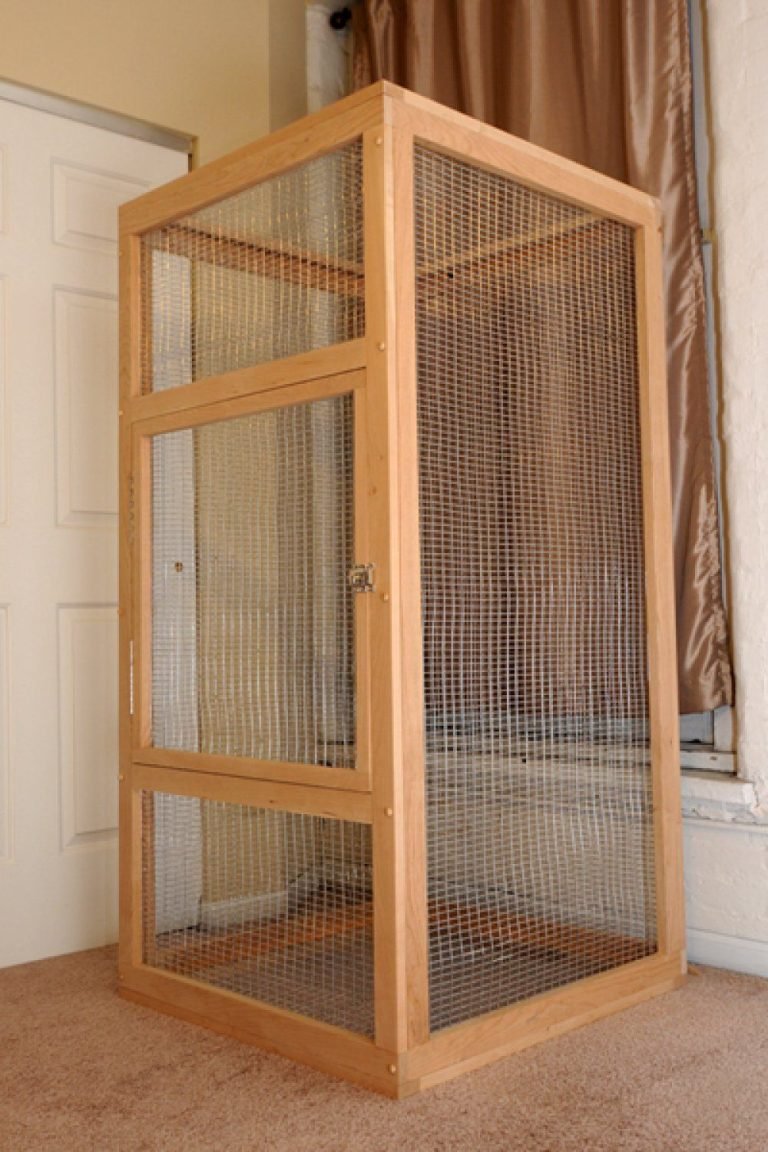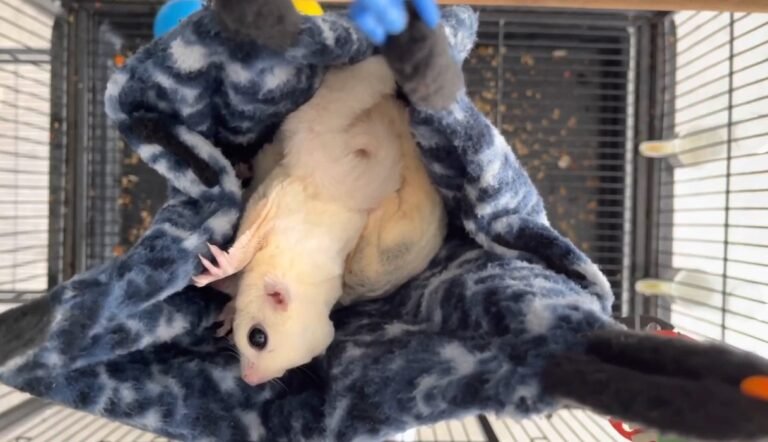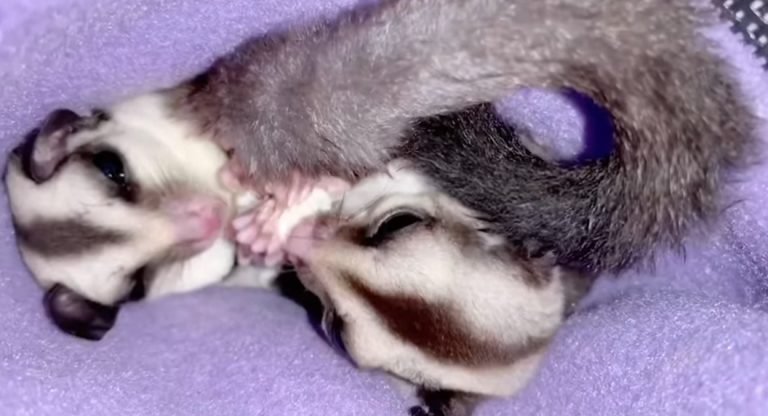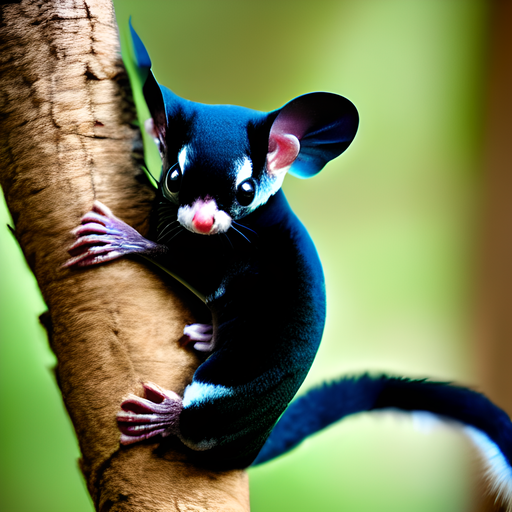How To Make Sugar Glider Cube
Looking to create a cozy and secure hideout for your sugar gliders? Want to provide them with the ultimate comfort while adding a touch of DIY fun to your day? Look no further! In this guide, we’ll show you how to make a sugar glider cube using fleece fabric, ensuring their safety and happiness.
Fleece fabric is the perfect choice for this project. Not only is it soft and snuggly, but it also provides insulation during colder months. Plus, its durability ensures that your furry friends can enjoy their cube for a long time.
Hidden seams are crucial. These concealed edges not only add an extra layer of safety by preventing fraying but also offer a seamless surface for your sugar gliders to explore and relax on.
So grab your scissors, select the print side of the fleece fabric, and let’s get started on crafting the perfect cube! It’s time to embark on an exciting DIY adventure that will delight both you and your adorable little companions.
Step-by-Step Guide: Sewing a Cube for Sugar Gliders
Follow our detailed instructions to sew a cube step by step.
Sewing a cube for your sugar gliders can be a fun and rewarding project. With our step-by-step guide, you’ll be able to create a cozy and comfortable space for your furry friends in no time. Let’s get started!
- Gather the materials
- Fleece fabric: Choose a soft and durable fleece fabric that will provide warmth and comfort for your sugar gliders.
- Measuring tape: Accurate measurements are crucial for creating the perfect cube.
- Scissors: Make sure you have sharp scissors to cut the fabric cleanly.
- Sewing machine or needle and thread: Decide whether you prefer using a sewing machine or sewing by hand.
- Measure and cut the fabric
- Measure the desired dimensions of your cube. A standard size is around 8 inches per side, but you can adjust it based on your sugar gliders’ needs.
- Add an extra half-inch to each side for seam allowance.
- Use the measuring tape to mark the dimensions on the fleece fabric.
- Cut out two identical squares for each side of the cube.
- Prepare for stitching
- Place two squares together with their right sides facing inward.
- Pin them together along one edge to secure them in place while sewing.
- Start stitching
- Begin sewing from one corner, leaving a small opening at one end.
- Use either a straight stitch or zigzag stitch to ensure durability.
- Continue stitching
- Stitch along each edge until you reach the next corner, leaving another small opening at that end as well.
- Turn inside out
- Carefully turn the cube inside out through one of the openings.
- Push out the corners gently to achieve a neat and crisp shape.
- Stuff the cube
- Use polyester fiberfill or other suitable stuffing material to fill the cube through one of the openings.
- Add enough filling to create a plush and comfortable space for your sugar gliders.
- Close the openings
- Once you’re satisfied with the amount of stuffing, sew up the openings using a ladder stitch or whip stitch.
- Make sure to secure the stitches tightly to prevent any loose threads.
Learn how to cut and measure the fleece fabric accurately.
Accurate measurements are essential when sewing a cube for your sugar gliders. To ensure a perfect fit, follow these tips for cutting and measuring fleece fabric:
- Use a measuring tape: Measure each side of your desired cube size precisely. This will help you determine how much fabric you need and ensure consistency in dimensions.
- Marking the dimensions: Once you have determined the measurements, use a fabric marker or pins to mark them on your fleece fabric. Double-check before cutting to avoid any mistakes.
- Cutting technique: When cutting, use sharp scissors that can glide smoothly through the fabric.
Tips and Tricks: Achieving Hidden Seams in Your Fleece Cube

Clever Ways to Hide Seams without Compromising Durability
Achieving hidden seams is crucial for both aesthetics and durability. Nobody wants their furry friends’ favorite hideout falling apart after just a few uses! Here are some clever tips to ensure your fleece cube looks seamless while remaining sturdy:
- Double-folded seams: Instead of leaving raw edges exposed, fold the fabric over twice before sewing. This technique not only hides the seam but also adds an extra layer of reinforcement.
- Matching thread color: Choose a thread color that closely matches the fleece fabric. Using a contrasting color may make any imperfections more noticeable.
- Trimming excess fabric: After sewing, carefully trim any excess fabric close to the seam line. This eliminates bulkiness and helps achieve a smoother finish.
- Invisible hand-stitching: For those hard-to-reach areas or final touches, use invisible hand-stitching techniques like slip stitches or ladder stitches. These stitches are virtually undetectable from the outside, giving your cube a seamless appearance.
Using Invisible Stitches for Seamless Results
To maintain that flawless look on your sugar glider cube, learning how to use invisible stitches is essential:
- Slip stitch: This versatile stitch is perfect for closing openings or attaching two folded edges together without visible threads on the outer surface.
- Ladder stitch: Also known as an invisible vertical stitch, this method creates nearly invisible connections between two pieces of fabric by alternating between them with small horizontal stitches.
- Blind hem stitch: If you have access to a sewing machine with this function, it can be handy for creating hidden seams on larger sections of your fleece cube.
Reinforcing Corners and Edges for Added Strength
To ensure your sugar glider cube withstands even the most enthusiastic playtime, reinforcing corners and edges is crucial:
- Backstitching: When sewing around corners or edges, reinforce these areas by backstitching a few stitches forward and backward. This strengthens the seam and prevents it from unraveling.
- Adding extra layers: For high-stress areas such as corners, consider adding an extra layer of fabric before sewing. This additional reinforcement will provide extra strength where it’s needed most.
- Topstitching: After sewing the seams, topstitch along the edges to secure them further. This not only reinforces the seams but also adds a decorative touch.
Experimenting with Different Sewing Machine Settings
To achieve optimal results when making a sugar glider cube, don’t be afraid to experiment with different sewing machine settings:
- Stitch length: Adjusting the stitch length can affect both the appearance and durability of your seams. Longer stitches may create a more visible seam, while shorter stitches offer added strength.
- Tension control: Proper tension ensures that your stitches are balanced and neither too loose nor too tight.
Exploring GliderGossip: Insights on Sewing a Cube for Sugar Gliders
Gain insights from experienced sugar glider owners on GliderGossip forums.
If you’re looking to make a cozy cube for your sugar gliders, there’s no better place to turn than the GliderGossip forums. This online community is filled with experienced sugar glider owners who are more than happy to share their knowledge and tips. From choosing the right materials to sewing techniques, you’ll find a wealth of information from those who have been through it all.
Read about their experiences in sewing cubes and learn from their mistakes.
One of the best ways to learn is by hearing about the experiences of others. On GliderGossip, you’ll come across stories shared by fellow sugar glider enthusiasts who have embarked on the journey of sewing cubes for their adorable pets. They often talk about the challenges they faced along the way and how they overcame them. By reading about their mistakes, you can avoid making similar ones yourself and save both time and effort.
Find inspiration from fellow enthusiasts who have perfected their designs.
Sometimes, all we need is a little inspiration to get started on our own projects. On GliderGossip, you’ll find talented individuals who have perfected their sugar glider cube designs. They showcase their creations with pride, sharing photos and detailed descriptions of what makes their cubes special. Take note of different color combinations, unique patterns, or innovative features that catch your eye. Let these ideas fuel your creativity as you embark on creating your own masterpiece.
Join the community and share your own tips and creations.
The beauty of GliderGossip lies not only in gaining knowledge but also in participating actively within the community. Once you’ve learned from others’ experiences and created your very own sugar glider cube, don’t hesitate to share it with fellow enthusiasts! Post pictures of your creation along with any tips or tricks you discovered along the way. By engaging with others, you’ll not only receive valuable feedback but also contribute to the ever-growing pool of knowledge on GliderGossip.
So, if you’re ready to dive into the world of sugar glider cube sewing, head over to GliderGossip and let the community guide you. Gain insights from experienced owners who have been there, learn from their mistakes, find inspiration in perfected designs, and be an active member by sharing your own creations. With GliderGossip as your go-to resource, you’ll be well on your way to creating a cozy and comfortable cube for your sugar gliders!
Expert Advice: Techniques for Sewing a Cube with Hidden Seams
Benefit from expert advice on achieving flawless hidden seams in your cube.
Sewing a cube with hidden seams can elevate the overall appearance of your project, giving it a professional and polished look. To achieve flawless hidden seams, consider the following tips from experts:
- Use French seams: French seams are perfect for creating clean and concealed edges. This technique involves enclosing raw fabric edges within the seam itself, resulting in a neat finish. Start by sewing wrong sides together, then trim the excess fabric before folding and stitching right sides together.
- Try flat-felled seams: Flat-felled seams work well for heavier fabrics or when you desire added durability. This method involves overlapping two fabric panels and sewing them down securely. It not only conceals raw edges but also reinforces the seam, making it suitable for items that will endure frequent use.
- Opt for invisible hand stitching: If you prefer an entirely seamless look, consider using invisible hand stitching techniques like slip stitch or ladder stitch. These methods involve carefully joining fabric pieces together without any visible stitches on the outside.
Explore advanced stitching techniques like French seams or flat-felled seams.
Exploring advanced stitching techniques can make all the difference. Here are some additional methods to consider:
- Mock French Seam: Similar to a French seam but easier to execute, this technique involves sewing wrong sides together first and then pressing open before sewing right sides together.
- Bound Seam: A bound seam adds an attractive decorative element while hiding raw edges. It involves encasing raw edges with bias tape or binding strips before sewing them down neatly.
- Double Topstitching: For added strength and style, try double topstitching along your hidden seams. This technique creates parallel lines of stitching that secure the seam allowances while adding a decorative touch.
Learn how to choose the right thread, needle, and tension settings for professional results.
To ensure professional-looking hidden seams, selecting the appropriate materials and settings is crucial. Consider the following factors:
- Thread: Opt for a high-quality thread that matches your fabric in color and weight. A strong polyester or cotton thread will provide durability and blend seamlessly with your project.
- Needle: Choose a needle suitable for your fabric type. For lightweight fabrics, use a fine needle, while heavier fabrics may require a larger needle size. Be sure to replace dull needles regularly to avoid snagging or damaging the fabric.
- Tension Settings: Adjusting the tension on your sewing machine is essential for achieving even stitches. Test different tension settings on scrap fabric until you find the optimal balance between top and bottom threads.
Master the art of pressing, clipping, and trimming fabric edges effectively.
Properly pressing, clipping, and trimming fabric edges can significantly impact the quality of your hidden seams. Follow these tips to achieve professional results:
- Pressing: Use an iron set at an appropriate temperature for your fabric to press open seams before folding them together.
Advanced Tips: Enhancing the Durability of Your Fleece Cube
Reinforce seams with double stitching or using a serger machine
To ensure your sugar glider cube withstands the test of time, reinforcing the seams is crucial. Double stitching is a simple yet effective technique that adds an extra layer of strength to the fabric. By sewing along the original seam line with two parallel lines, you create a sturdy bond that can withstand playful gliders and their sharp little claws.
If you have access to a serger machine, even better! A serger uses multiple threads to create strong and durable seams. This professional-grade machine not only reinforces the edges but also prevents fraying, making it an excellent investment for long-lasting fleece cubes.
Explore fabric options that are more resistant to wear and tear
While fleece is known for its softness and comfort, not all types of fleece are created equal. To enhance the longevity of your sugar glider cube, consider opting for fabrics that are more resistant to wear and tear.
Here are some fabric options worth exploring:
- Anti-pill fleece: This type of fleece is designed specifically to resist pilling, ensuring your cube stays smooth and intact even after repeated use.
- Heavyweight fleece: With its thicker texture, heavyweight fleece offers increased durability, making it less prone to tears or holes caused by active gliders.
- Nylon-reinforced fleece: Combining the softness of traditional fleece with added strength from nylon fibers, this fabric option provides exceptional resistance against wear and tear.
By selecting these sturdier fabric options, you’ll be giving your sugar glider cube a fighting chance against those mischievous marsupials!
Learn how to properly clean and maintain your sugar glider’s cube
Regular cleaning and maintenance play a significant role in extending the lifespan of your sugar glider’s cube. Here’s what you need to know:
- Spot clean daily: Remove any visible dirt, debris, or waste from the cube using a lint roller or gentle brush.
- Machine wash monthly: Set your washing machine to a gentle cycle with cold water and use a mild detergent. Avoid fabric softeners as they can reduce the fleece’s absorbency.
- Air dry only: Hang the cube to air dry rather than using a dryer, as excessive heat can cause shrinkage or damage to the fabric.
Consider these tips for maintaining your sugar glider’s cube:
- Trim their nails regularly to minimize scratching and potential damage to the fabric.
- Rotate multiple cubes if you have them, allowing each one time to rest and recover in between uses.
- Store the cube in a safe place when not in use, away from sharp objects or other pets that may be tempted to play rough with it.
By following these cleaning and maintenance practices, you’ll ensure that your sugar glider’s cube remains fresh, clean, and durable for many gliding adventures to come!
Remember, taking those extra steps like reinforcing seams, choosing durable fabrics, and proper maintenance will go a long way in enhancing the durability of your sugar glider cube.
Final Thoughts: Perfecting Your Sugar Glider’s Cube for Maximum Comfort
Ensure maximum comfort by adding extra padding or fleece lining.
One of the key factors in creating a cozy and comfortable cube for your sugar gliders is to provide ample padding or fleece lining. This will not only make the cube softer but also help insulate it, keeping your gliders warm during colder months. You can use various materials such as foam, cotton batting, or even old blankets to achieve this. Simply cut the material to fit the dimensions of the cube and attach it securely using fabric glue or stitching.
Consider incorporating multiple entrances and exits for easy access.
Sugar gliders are agile creatures that love to explore their surroundings. By incorporating multiple entrances and exits in their cube, you’ll provide them with an exciting environment that mimics their natural habitat. This will also make it easier for them to navigate inside the cube and prevent any potential accidents. You can create additional openings by cutting small holes on different sides of the cube, ensuring they are large enough for your gliders to comfortably pass through.
Personalize the cube with fun patterns, colors, or even your gliders’ names.
Adding a personal touch to your sugar glider’s cube not only makes it visually appealing but also creates a sense of ownership and familiarity for both you and your pets. Consider using colorful fabrics with fun patterns that reflect your gliders’ personalities or interests. You could even go a step further and embroider their names on the fabric. Remember, though, to choose non-toxic dyes or paints that won’t harm your furry friends if they decide to nibble on their surroundings.
Enjoy the satisfaction of providing a safe and cozy space for your sugar gliders.
Creating an ideal living space for your sugar gliders is not just about aesthetics; it’s about ensuring their safety and well-being too. By investing time in perfecting their cube, you’re providing them with a secure and comfortable environment that promotes their physical and mental health. Observing your gliders happily exploring their new cube, snuggling up in its soft lining, and feeling at ease will bring you immense satisfaction as a responsible pet owner.
Conclusion
In this guide, we have delved into the art of sewing a functional and cozy fleece cube for your sugar gliders. By following our step-by-step guide, you can create a comfortable space that your furry friends will love. Our tips and tricks have also provided insights on achieving hidden seams, ensuring a seamless finish.
Exploring GliderGossip has given us valuable knowledge about sewing cubes for sugar gliders. By tapping into the expertise shared by experienced individuals, we can enhance our skills in creating these delightful habitats. Expert advice has further enlightened us on techniques for sewing cubes with hidden seams, taking our craftsmanship to the next level.
To maximize durability, we have uncovered advanced tips that will ensure your fleece cube stands the test of time. By implementing these strategies, you can create a long-lasting sanctuary for your sugar gliders to enjoy.
In conclusion, mastering the art of sewing a functional and cozy fleece cube is essential in providing maximum comfort to your sugar gliders. With attention to detail and careful execution of techniques such as achieving hidden seams, you can create an environment that truly caters to their needs.
Now it’s time to put your newfound knowledge into action! Get creative with different fabric patterns and colors, experiment with various stitching techniques, and don’t forget to add those personal touches that make it uniquely yours. Your sugar gliders will thank you for their new cozy retreat!
FAQs
1.How long does it take to sew a fleece cube for sugar gliders?
The time required depends on various factors such as your sewing skills and experience. On average, it may take around 2-3 hours from start to finish.
2.Can I use materials other than fleece?
While fleece is recommended due to its softness and warmth, you can experiment with other pet-safe fabrics as well. Just ensure they provide the necessary comfort and insulation.
3.Are hidden seams necessary for a sugar glider cube?
Hidden seams are not essential, but they give a more polished and professional look to your cube. They also prevent loose threads from becoming potential hazards for your sugar gliders.
4.How often should I wash the fleece cube?
It is recommended to wash the fleece cube regularly, about once every 1-2 weeks or as needed. This helps maintain cleanliness and hygiene for your sugar gliders.
5.Can I add extra padding to the fleece cube?
Absolutely! Adding extra padding, such as foam inserts or layers of batting, can enhance the comfort level of the cube for your sugar gliders. Just make sure it remains secure and doesn’t pose any safety risks.







